- Home
- Antonia Fraser
Royal Charles: Charles II and the Restoration Page 13
Royal Charles: Charles II and the Restoration Read online
Page 13
At the time when it was made in Jersey, this decision represented an intelligible desire to utilize all available pro-monarchical forces within Scotland. If Montrose did well, he would strengthen the King’s hand in his coming negotiations with the Covenanters. If he did very well, he might even make these same negotiations both abortive and unnecessary. But it was most unfortunate that Montrose landed at Kirkwall before he received a crucial letter from the King, written from Jersey and dated 12 January. In this letter Charles broke the news that he was once more contemplating meeting the terms of the Scots. Montrose, in his ignorance and innocence, campaigned in Scotland quite unaware of what was taking place elsewhere in Europe.
Montrose was a man of strong sensibilities, black and white loyalties. He had performed an important psychological role after the execution of King Charles I by transmitting some of his own enthusiasm for recovering the throne to the King’s son: the arch-traitors who had murdered his beloved master could and would be defeated. He wrote to his new sovereign, ‘As I never had passion upon earth so strong as that to do your King father service, so it shall be my study … to show it redoubled for the recovery of you.’12 That was the kind of servant of whom Charles stood in need in the dark days of 1649.
But Montrose was also excitable, a noble figure not only to his age, but to himself. Later Burnet wrote of him that he took upon him the deportment of a hero too much ‘and lived as in a romance’. Hyde more calmly described him as ‘a man of éclat’ who lived in style with numerous servants.13 It is a fact that the presence of a romantic character on the stage of history frequently upsets the balance of the whole plot. To a certain extent this was true of Charles’ involvement with Montrose. Naturally Montrose’s supporters took the King’s new negotiations with the Covenanters much amiss. Montrose’s correspondence with Charles was subsequently published in Paris, with the deliberate intention of disrupting relations between King and Covenanters. Yet Charles’ intention at this point was hardly to betray Montrose – something for which he had no possible motive, uncertain as he was of the whole Covenanter situation. He did however entertain hopes that he might frighten the Covenanters by his use of Montrose: much as they loathed Montrose, they might be persuaded by jealousy to take some kind of corporate action with him. In corporate action in Scotland, the King was convinced – as were most sensible people – lay the true salvation.
Charles finally left Jersey on 13 February 1650. Warrants for the Court in Jersey towards the end of the previous year show one hundred pounds paid to Robert Long for parchment, paper, quills, wax and so forth.14 That was the measure of the ceaseless correspondence which had preceded his embarkation. And the cost of the departure itself was not small. It certainly strained the slender Jersey exchequer. Now that he decided to take the plunge and meet the Scots again, Charles’ intention was to make the bravest showing possible, if only to demonstrate that they might be dealing with a pauper, but they were also dealing with a King. He even went to the trouble of acquiring some new clothes – although clothes were never one of his ruling passions – because the rest of his wardrobe was ‘so spotted and spoiled’. An embroidered suit with hatband and belt was ordered, and another plain riding suit, with an ‘innocent [spotless] coat’.15
The King went first to meet his mother. How much – all tragic – had happened in the two years since their last encounter! Now the Queen Mother’s own poverty was fearful: she relied on scarcely concealed acts of charity among the kinder of the French noblesse. For example, one princess, a former mistress of Henri Quatre, sent the poor lady a sheep whose stomach proved to be filled with gold coins. No doubt both the mutton and money were welcome, but it was a sad comedown for the daughter of the great Henri to be dependent on the sweetness of his former paramour. Even so, the main burden of Henrietta Maria’s conversation was to beg her son never to sign the Covenant.
The new battle joined between the King and the Covenanters – a battle of words, and certainly of wits, from which in the end neither emerged triumphant, at least in the estimate of history – was joined at Breda on 26 March. Both parties arrived there on that date within a few hours of each other. The King’s deliberate and delightful courtesy was from the first very much to the fore. He sent his own coach to receive the Scottish commissioners, which was one formal mark of extreme respect, and received them in his bed-chamber, which was another.
Regrettably, the three chief commissioners chosen, Alexander Brodie, Alexander Jaffray and the Earl of Cassilis, belonged to the sternest faction of the Covenanters. Three other commissioners, George Winram, Sir James Smith and the Earl of Lothian, who were made of softer stuff, were kept severely in the background. On 4 April the most domineering terms were laid before the young King at Breda. Not only was he himself to take the Oath itself, but he was also to swear to establish the Presbyterian form of worship in England and Ireland, as well as Scotland. Furthermore, he was to permit no other form of worship within his own household. King Charles I would have turned in his grave, and, commenting on it all afterwards, Henrietta Maria made almost the same point: ‘Le feu Roy votre père avait un si grande horreur….’16
The stipulation concerning the King’s own household was a peculiar insult by the standards of the time; the demand was quite in excess of normal practice. Even Henrietta Maria was permitted Catholic chaplains and a chapel in the anti-Papist England of the 1620s, a country in which Catholicism was officially proscribed. On a grander scale, all church affairs were to be submitted to the authority of the Kirk; all treaties with Catholics were to be annulled, all previous commissions and declarations withdrawn.
Despite the loftiness of these claims, Charles was still prepared to accept them, as he told his brother-in-law the Prince of Orange – so far as Scotland itself was concerned. What he could not do was impose on ‘his other kingdoms’. And he could not renege on his previous commitments.17 The clause concerning previous treaties and commissions meant in effect ratting on the faithful Ormonde in Ireland and the fiery Montrose now in Orkney.
But the commissioners were adamant. Indeed, there could be no question of the terrible choice which faced Charles, since it was spelt out for him by the commissioners, who with great lack of charm referred to Montrose throughout as James Graham – shades of his father and ‘Charles Stuart the elder’. As for Charles’ previous dealings with James Graham: ‘It will be your Majesty’s wisdom to acknowledge the sin, and to humble yourself before God.’18
So the battle at Breda raged. People prophesied the outcome according to their hopes. Sir John Berkeley, one of Charles’ aides, wrote that there could be no danger of an agreement, ‘for they [the Scots] are resolved to insist upon things unreasonable, and we are not in a disposition to grant them [things] reasonable’. But Jermyn and Percy were more optimistic. It was at this point that one Royalist was quoted in an English newspaper as saying, ‘It’s needful sometimes to hold a candle to the devil….’19
The scales wavered to and fro and stayed, for the time being, level. But there were two new weights on the side of the Covenant which were to be of considerable significance in the final decision. First, the Engagers, or at least some of them, had returned to the fold of the Scottish counsels, and as a result Lauderdale, amongst others, was back at Breda. Lauderdale stressed the importance of Charles’ physical presence in Scotland. His mere arrival there would ‘dissipate those clouds’.20 Once before Charles had been asked to lend his presence to a Scottish campaign, had not arrived in time and had been blamed in consequence. The fact that this Scot, whom Charles both liked and trusted, advocated agreement, was important.
Even more influential was the advice of the Prince of Orange. William’s reflection on hearing the news of the Irish defeat must stand for a whole body of judicious monarchical opinion: ‘It is obvious that God wishes him [Charles] to understand that Scotland is the only way to his restoration.’ Under the circumstances, William urged Charles to go the whole hog – to follow Presbyterian worship himself while
in Scotland.21 William concerned himself with trying to make the Covenanters scale down their more unreasonable demands, through the medium of the Dutch Calvinists.
Charles took refuge in silence. This enabled both sides to rejoice in turn. One moment the Cavaliers were triumphant and describing the Presbyterians as ‘drowned rats’; the next moment Argyll’s star was sufficiently in the ascendant for him to hint that Charles might actually marry his daughter, Lady Anne Campbell, a decent but scarcely scintillating match.
The problem remained Montrose, now campaigning somewhere in the north of Scotland, and quite out of touch. But by this stage Charles understood perfectly well that he either had to accept the Covenanters’ terms or abandon the hope of restoration for the time being. At last, on 27 April, Charles returned a formal and favourable answer to the commissioners’ proposals. He would swear the Oath of the Covenant. He would grant everything demanded as regards Scotland herself, including the establishment of the Presbyterian Kirk and the ratification of the Scottish Parliament and its Acts.
He still would not accept Presbyterianism for England, the abandonment of the Catholic Irish treaty, the renunciation of Ormonde – in short, all those demands which were not strictly speaking pertinent to Scotland. He proposed that the Engagers should receive back both their estates and their public offices (for the time being they had to be content with their estates). But it was implicit in the agreement as it stood that Montrose no longer held the King’s commission.
In Scotland Montrose heard the small glad news that the King had bestowed upon him the Garter and the vast bad news of the talks at Breda in one and the same letter. By the time the King wrote a rueful letter telling Montrose that he now had to look after himself, the Marquess had already been captured by the gleeful Covenanters. On 18 May he was led through the streets of Edinburgh like a captive in a Roman triumph. On 21 May (O.S.) he was executed.
He went to his death, they said, like a bridegroom. As the ghost of Strafford haunts Charles I, Montrose’s ghost continues to haunt the reputation of his master. It has been suggested in defence of Charles II that he received private assurances (which were broken) that Montrose would not be sacrificed. As a counter to this it has been pointed out that Argyll would never have given such assurances, knowing in advance that they would be broken, for he stood thereby to imperil the new treaty between King and Scots at its inception.22 Both points are academic, if on balance it is likely that the assurances were not given, because Charles at Breda was playing for a larger stake than the single life of Montrose. He was gambling for his restoration and for that of the entire monarchical regime.
In view of Montrose’s tragic end, it is natural to blame the King for his betrayal. But many survivors, partisans, guerrillas or exiled leaders without troops, behave in a manner unimaginable in the clear light of successful day. It was in the gloomier shades of desperation that Charles’ treatment of Montrose took place: in this light it should be judged.
Immediately after agreeing to take the Oath of the Covenant Charles had to contend with the other unpleasant consequences of his new policy. First the Anglican Royalists in England felt understandable outrage and disdain at such a compromise. It was not for this that they had sacrificed lives and estates in the interests of the King in the past, nor for the Presbyterian interest that they intended to struggle on in the future, bowed under the crippling demands of sequestration and taxation. Thus a number of horrified Anglicans in England took no further part in the Royalist cause there. Having lit a candle to the devil, King Charles II could not expect other lights to shine as well.
Animated by the same profound horror, Hyde and his faction exclaimed against the dishonour of the deed. Hyde had gone on a mission to Spain seeking support, in order to avoid the contamination of the Covenanter intrigues. ‘Oh my lady,’ he wrote from Madrid to his friend Lady Morton, ‘we are making haste out of Christianity and forgetting that there is another court to appear in when we are out of this.’ To Nicholas he described the whole involvement as ‘folly and atheism’. The most he could do was utter the pious ejaculation: ‘If there be a judgement of Heaven upon him [Charles II], I can only pray it may fall as light on him as may be.’23
On 24 May (O.S.) Charles set sail for Scotland. In general, if he went with the disapproval of the English Anglicans, he went with the approval of Europe. Her sovereigns were well able to appreciate that he had little alternative but to travel north if he wished to recover his throne – being either disinclined or unable to help him themselves. As a Commonwealth spy wrote accurately of the King’s Scottish expedition, ‘They must needs go whom their Fates drive….’24
Charles’ journey, and indeed his arrival in Scotland, was not auspicious. He was twenty-two days at sea, tormented by contrary winds, and it was only by ‘a very great Providence’ that he escaped the searching ships of the Commonwealth. The Providence consisted of a Scotch mist. A hundred years earlier it had been a Scotch mist which saved his great-grandmother, Mary Queen of Scots, from the navy of Queen Elizabeth, on her return from France. On that occasion John Knox had been inspired to compare the mist to the religious darkness which the young Queen was bringing with her. In this case it would have been plausible to suggest that it was the Covenanters who were about to confront Charles with the powers of religious darkness.
Even before he sailed, the Scottish Parliament had made some stringent new demands, believing, as Mercurius Politicus put it, that the King was now ‘safely caught in the springe [trap] of the Kirk’.25 Charles himself was unaware of this, but the unpleasant news caught up with him when a storm obliged his vessel to anchor just off Heligoland at the mouth of the Elbe. There were new arguments and disputes.
It was on 3 July, still on board ship, but by now at anchor at the mouth of the River Spey, on the north-east coast of Scotland, that Charles capitulated for the third and last time. For him personally it had been a painful progress, from the first agreement to negotiate, via the moderate terms proposed in April, to the final humiliation of accepting these new and pungent conditions. Even so, he did not give in without a final attempt to defend the laws of England against the encroachments of a Scottish Parliament. How could the establishment of Presbyterianism in England be lawful, since nothing had received the King’s assent since 1649, when monarchy and the House of Lords had been abolished? This ploy was unsuccessful.
So it was that Charles II came at last to swear that great oath, so solemn to so many, so odious to many more, so invidious to a Stuart king. He took it in both forms. It began: ‘I Charles King of Great Britain, France and Ireland, do assure and declare by my solemn oath, in the presence of Almighty God, the searcher of all hearts, my allowance and approbation of the National Covenant and Solemn League and Covenant above written….’ It ended menacingly on the subject of Presbyterian government and worship, as approved by the General Assembly of the Kirk and the Scottish Parliament: ‘And I shall observe these in my own practice and family, and shall never make opposition to any of these, nor endeavour any alteration therein.’26
There can be no question that Charles swore the Oath in the cause of expediency and nothing else. As Buckingham, ever light-hearted where considerations of honour were concerned, had originally suggested, once he had sworn the Oath and secured Scotland, then he would proceed on his own sweet way.
In part, he had been brought to this cynical signature by the demands of Realpolitik. But the Covenanters themselves were also guilty. They had imposed upon their King demands which they knew he had absolutely no desire to fulfil (and had tried to impose some which were legally outside his power to grant, such as the commitment of England to Presbyterianism). This point was appreciated by the Covenanters themselves in their hearts. Alexander Jaffray, one of the commissioners, wrote in his Diary, ‘We did both sinfully entangle and engage the nation ourselves and that poor, young Prince to whom we were sent, making him sign and swear a Covenant which we knew from clear and demonstrable reasons that he hated in his hea
rt.’27
But that was after the event. At the time Kirk and politicians were delighted with the effects of their intransigence. They combined to keep a strict watch over their King: he was treated like a secret weapon not yet ready to be unveiled. The fish-wives might burn their baskets on bonfires out of joy at the coming of their Prince, but they were not otherwise allowed to have any truck with him. And from the nobility it was ‘none of the better sort’, only ‘Argyll’s faction’ who were granted access, according to a report given to Nicholas.28
As it was, Charles’ first few weeks in Scotland were of unimaginable gloom and depression. In themselves, they were quite enough to prejudice him against Scotland, and its way of life, even if he had not already had dour experience of the Covenanters. It was true that much of what he saw was redolent of his family’s history. He visited Falkirk – ‘his own house’, as one correspondent put it, since it had been built by his ancestor James V as a hunting lodge. But not all the architectural echoes of family history were as pleasing as this graceful palace, built in the French manner. Charles also visited Gowrie House at Perth, whose name spoke of that strange entanglement of King James VI and the aristocracy, the Gowrie conspiracy. Whatever the truth of it, King James had at least emerged with his life. ‘God grant His Majesty be as fortunate’ was one pious reflection concerning King Charles’ own sojourn there.29
At Aberdeen his lodgings overlooked the Tolbooth. While Montrose’s head had been exhibited in Edinburgh itself, the Scots had followed their ancient if barbarous custom of posting up other limbs in other towns as a warning. Montrose’s hand was nailed to the Tolbooth. Even if the King did not see it, he must have been told of the grisly memento. The King’s standard in Scotland was of black damask; it depicted joined hands between swords coming out of a cloud; the Latin motto referred to those whom piety, honour and virtue had made friends. Montrose’s fate was a perpetual reminder of the sacrifice which, along with piety, honour and virtue, had gone to the making of this new friendship between himself and the Kirk.

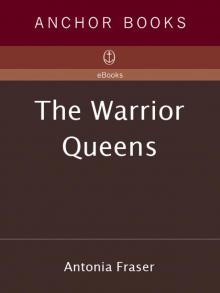 Warrior Queens
Warrior Queens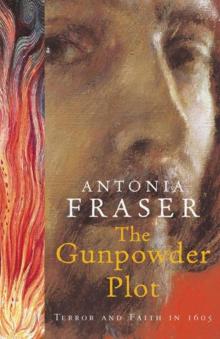 The Gunpowder Plot
The Gunpowder Plot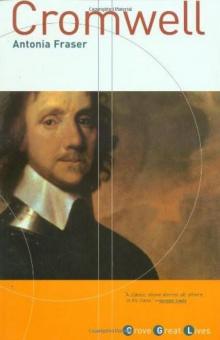 Cromwell
Cromwell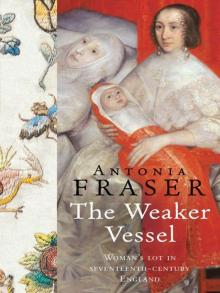 The Weaker Vessel: Women's Lot in Seventeenth-Century England
The Weaker Vessel: Women's Lot in Seventeenth-Century England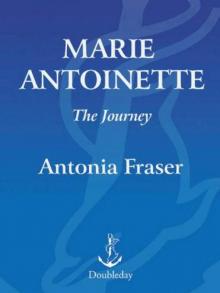 Marie Antoinette: The Journey
Marie Antoinette: The Journey Oxford Blood
Oxford Blood Your Royal Hostage
Your Royal Hostage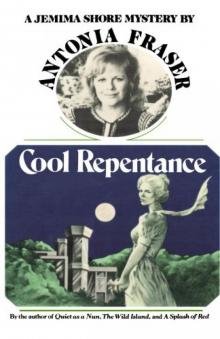 Cool Repentance
Cool Repentance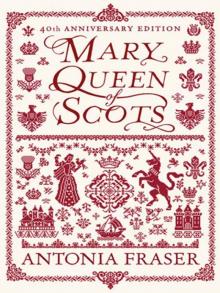 Mary Queen of Scots
Mary Queen of Scots Political Death
Political Death Royal Charles: Charles II and the Restoration
Royal Charles: Charles II and the Restoration My History: A Memoir of Growing Up
My History: A Memoir of Growing Up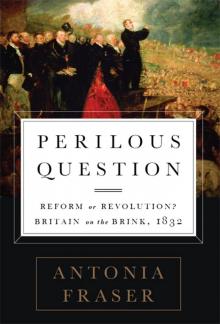 Perilous Question: Reform or Revolution? Britain on the Brink, 1832
Perilous Question: Reform or Revolution? Britain on the Brink, 1832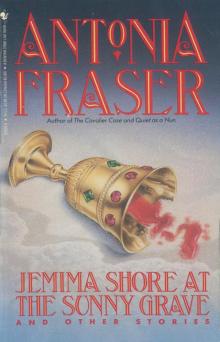 Jemima Shore at the Sunny Grave
Jemima Shore at the Sunny Grave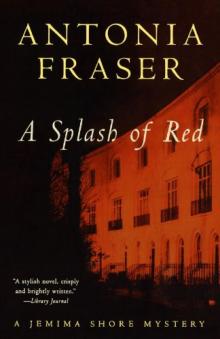 A Splash of Red
A Splash of Red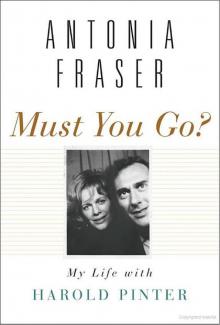 Must You Go?: My Life With Harold Pinter
Must You Go?: My Life With Harold Pinter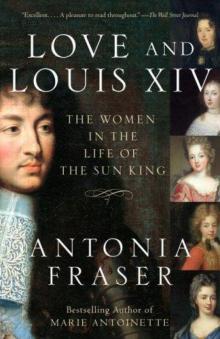 Love and Louis XIV: The Women in the Life of the Sun King
Love and Louis XIV: The Women in the Life of the Sun King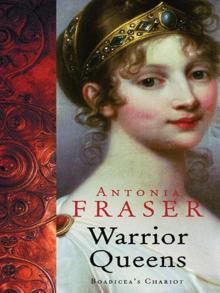 The Warrior Queens
The Warrior Queens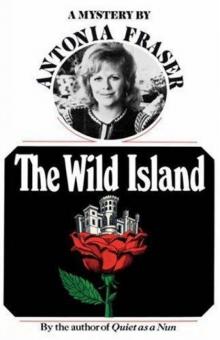 The Wild Island
The Wild Island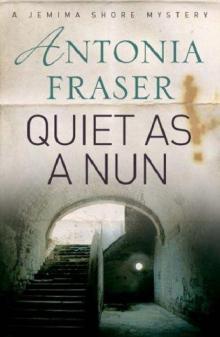 Quiet as a Nun
Quiet as a Nun Perilous Question
Perilous Question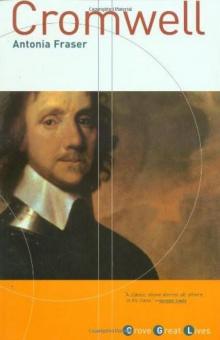 Cromwell, the Lord Protector
Cromwell, the Lord Protector Gunpowder Plots
Gunpowder Plots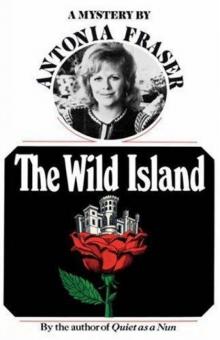 The Wild Island - Jemima Shore 02
The Wild Island - Jemima Shore 02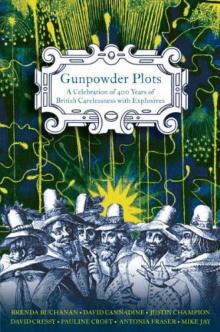 Gunpowder Plots: A Celebration of 400 Years of Bonfire Night
Gunpowder Plots: A Celebration of 400 Years of Bonfire Night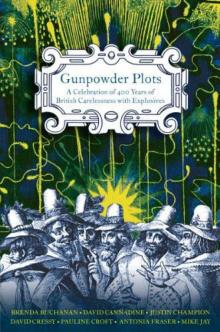 Gunpowder Plots_A Celebration of 400 Years of Bonfire Night
Gunpowder Plots_A Celebration of 400 Years of Bonfire Night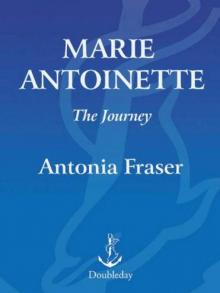 Marie Antoinette
Marie Antoinette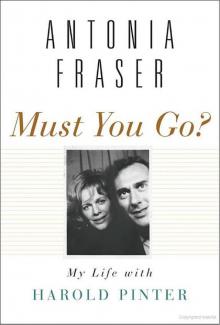 Must You Go?
Must You Go? My History
My History